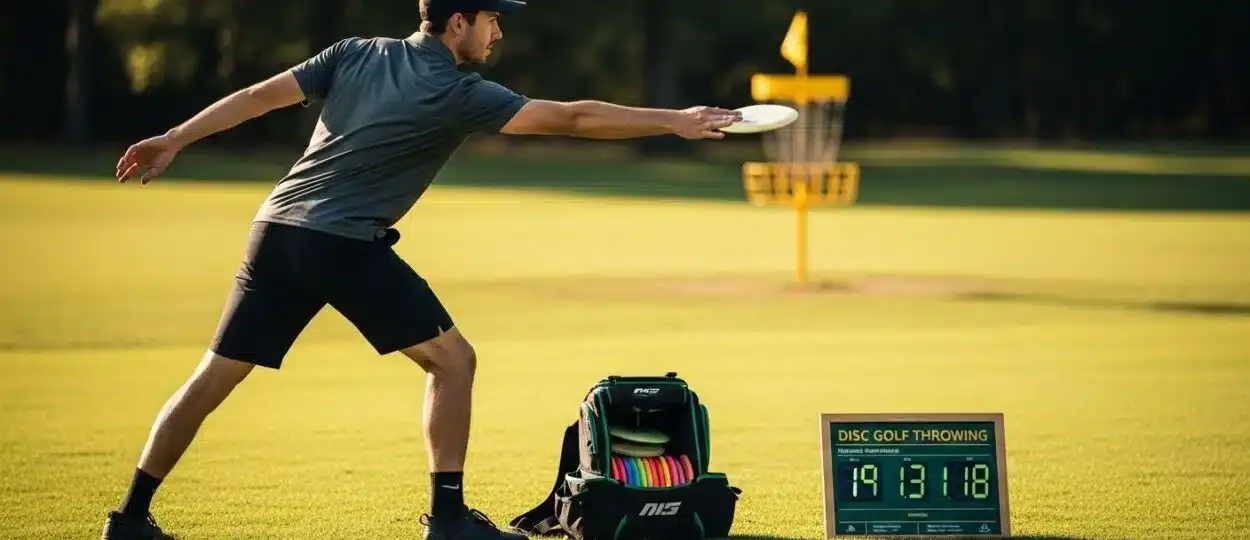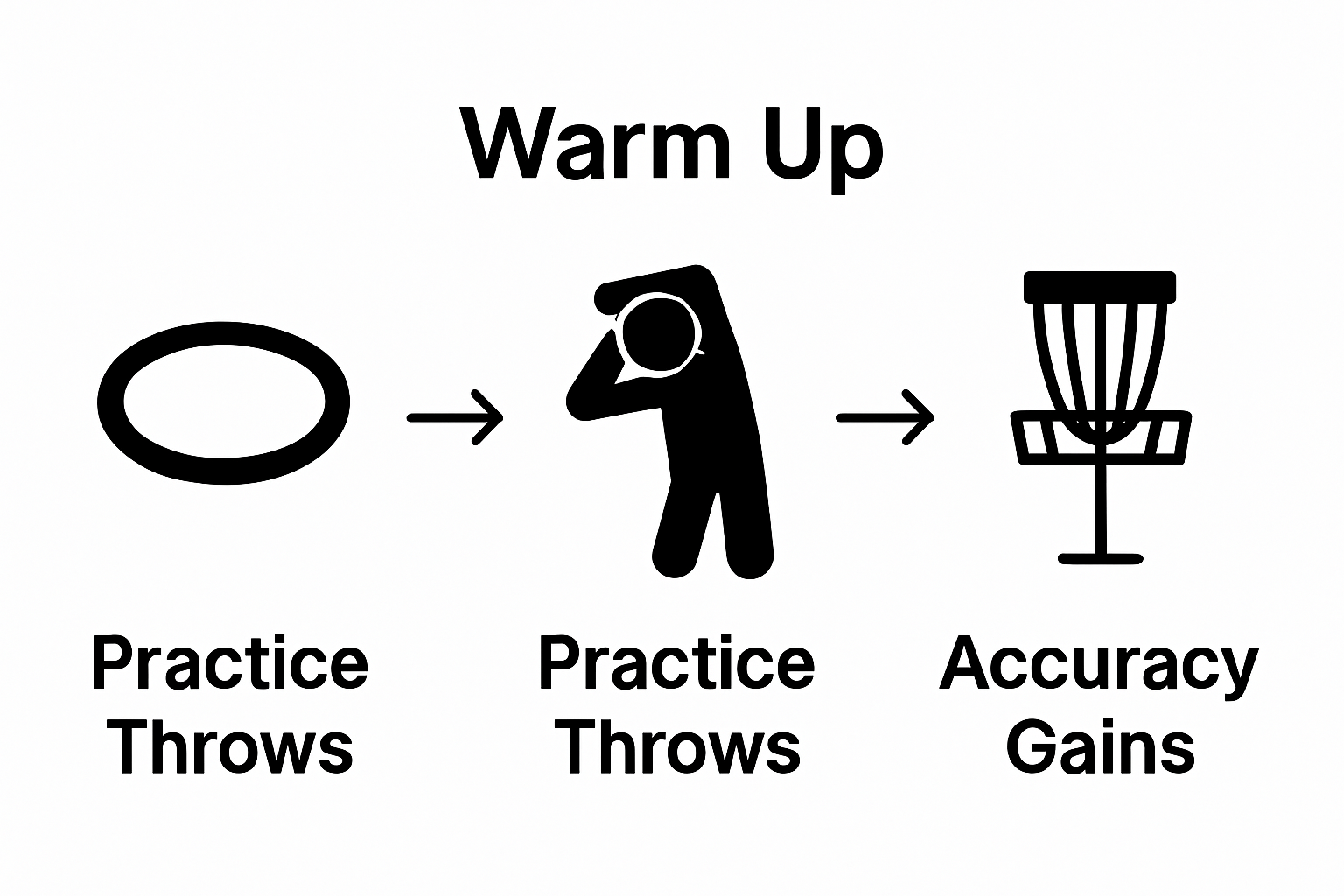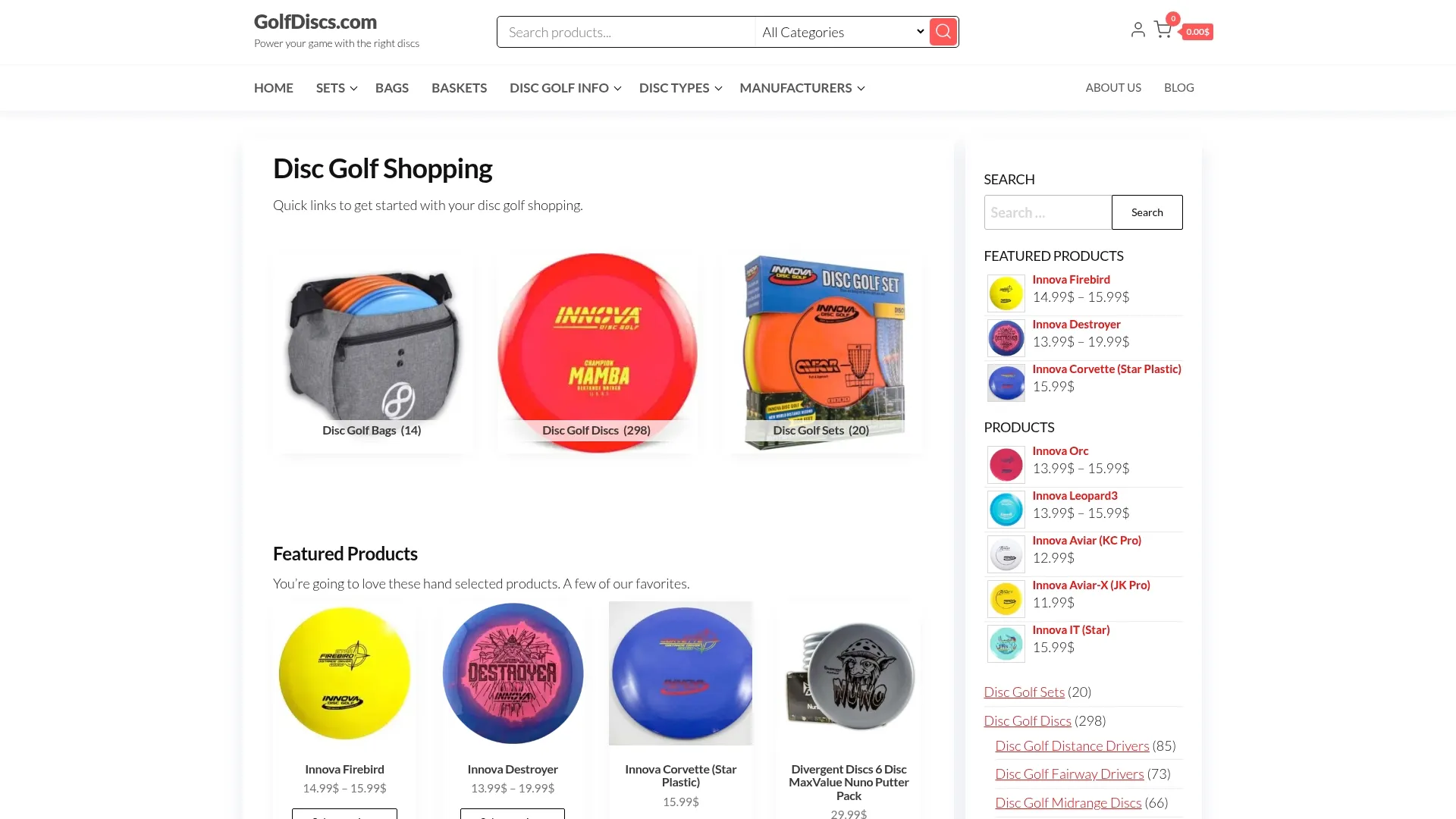
Master Disc Golf Throwing Techniques for Better Accuracy
Disc golf is experiencing a major surge in popularity, with over 13,000 active courses worldwide and thousands of new players joining every month. Most people think you need expensive equipment or years of experience to get started. Actually, all it takes is the right approach and a few smart steps and you can master the basics faster than you think.
Table of Contents
- Step 1: Gather Your Essential Disc Golf Gear
- Step 2: Warm Up and Assess Your Throwing Posture
- Step 3: Select Appropriate Throws for Different Situations
- Step 4: Practice Your Grip and Release Techniques
- Step 5: Execute and Adjust Your Throws During Practice
- Step 6: Review Your Performance and Identify Areas for Improvement
Quick Summary
| Key Point | Explanation |
|---|---|
| 1. Start with Essential Discs | Acquire a putter, midrange disc, and driver to cover various throwing techniques effectively. |
| 2. Focus on Proper Warming Up | A 10-15 minute dynamic warm-up enhances performance and prevents injuries, including arm circles and torso rotations. |
| 3. Master Multiple Throwing Techniques | Develop backhand and forehand throws to adapt to different course challenges, improving your versatility as a player. |
| 4. Perfect Your Grip and Release | Use a power grip for maximum spin and focus on a smooth release angle for better throw accuracy and distance. |
| 5. Review Your Practice Performance | Record and analyze your sessions to identify strengths and weaknesses, using data to track improvement trends over time. |
Step 1: Gather Your Essential Disc Golf Gear
Starting your disc golf journey requires the right equipment, and understanding what you need is crucial for enjoying the game. When first stepping onto the course, players need a basic set of tools that will support their throwing techniques and overall performance. The Professional Disc Golf Association (PDGA) provides comprehensive guidelines about essential gear for new players.
Disc Selection Matters
Your first priority is acquiring the right discs. Most beginners should start with three primary disc types: a putter, a midrange disc, and a driver. Each disc serves a unique purpose in your throwing technique. Putters are designed for short, precise shots near the basket, with a slower speed and more stable flight. Midrange discs offer versatility for intermediate distances, providing more control than drivers. Drivers are crafted for maximum distance, with aerodynamic designs that help you achieve longer throws.
Beyond the discs themselves, you will need a sturdy disc golf bag to carry your equipment. Look for a bag that comfortably holds 8-12 discs and has additional pockets for water bottles, towels, and other accessories. Some players prefer minimalist shoulder bags, while others opt for backpack-style carriers with extra storage. Choose a bag that matches your playing style and comfort level.
Here is a summary table to help you understand the differences between the main disc types for beginners, their primary uses, and how they impact your playing experience.
| Disc Type | Primary Use | Key Features |
|---|---|---|
| Putter | Short, precise shots near basket | Slow speed, stable flight, high accuracy |
| Midrange Disc | Versatility for intermediate shots | Moderate speed, good control, balanced flight |
| Driver | Maximum distance throws | High speed, aerodynamic design, less controllable |
For those new to the sport, check out our guide on essential beginner tips to help you select the right gear and understand the basics of disc golf equipment. A well-prepared player is more likely to enjoy the game and improve their skills quickly. Remember that your initial gear does not need to be expensive professional equipment. Start with affordable, beginner-friendly discs that will help you learn proper throwing techniques and develop your skills on the course.
Step 2: Warm Up and Assess Your Throwing Posture
Preparing your body for disc golf requires more than just grabbing your discs and heading to the course. A proper warm-up routine is crucial for preventing injuries and improving your throwing accuracy. According to research published in the Journal of Strength and Conditioning Research, targeted warm-up exercises can significantly enhance athletic performance and reduce the risk of strain.
Dynamic Warm-Up Techniques
Begin your warm-up with gentle dynamic movements that engage your entire body. Start with arm circles, gradually increasing the diameter to loosen shoulder muscles and improve range of motion. Rotate your torso from side to side, allowing your arms to swing naturally, which helps activate core muscles critical for powerful disc throws. Perform light jogging or walking lunges to wake up your leg muscles and establish a solid connection between your lower and upper body.
Posture is the foundation of an effective disc golf throw. Stand with your feet shoulder-width apart, knees slightly bent, and your weight evenly distributed. Your throwing-side foot should be slightly behind your body, creating a natural power stance that allows for maximum rotational energy. Keep your back straight but relaxed, and engage your core muscles to provide stability. Practice your stance without a disc first, focusing on balance and comfort.
For players looking to refine their technique further, explore our comprehensive guide to disc golf fundamentals that can help you understand the nuanced aspects of body positioning. Your warm-up routine should take approximately 10-15 minutes, allowing your muscles to become loose and responsive.

Pay attention to how your body feels during these movements. If you experience any sharp pain or significant discomfort, modify the exercises or consult a fitness professional who understands disc golf-specific movements.
Step 3: Select Appropriate Throws for Different Situations
Successful disc golf players understand that no single throwing technique works for every scenario on the course. Mastering multiple throwing styles allows you to navigate diverse obstacles and terrain effectively. Explore our comprehensive disc golf techniques guide to deepen your understanding of these crucial skills.
Fundamental Throwing Techniques
The backhand throw remains the most fundamental technique in disc golf. Imagine your body as a coiled spring, with your throwing arm swinging across your body in a smooth, powerful arc. Start with your body sideways to the target, weight on your back foot, then transfer your weight forward as you release the disc. This technique provides maximum power and control for straight and slightly curved shots.
Forehand throws offer an essential alternative when backhand techniques become challenging. This throw mimics a sidearm motion, with your disc held in front of your body and released with a flicking wrist movement. Forehand throws are particularly useful for navigating around obstacles or when you need to curve the disc from right to left for right-handed players. The key is maintaining a compact, controlled motion that generates spin and precision.
Use this comparison table to distinguish between the two fundamental disc golf throwing techniques and when each is most effective on the course.
| Throw Type | Basic Motion Description | Best For |
|---|---|---|
| Backhand | Arm swings across body, weight shifts forward | Straight or slightly curved shots |
| Forehand | Sidearm flick, wrist-driven release | Curving around obstacles, tight fairways |
Understanding when to use each throw requires practice and situational awareness. Wooded courses with tight fairways demand accuracy and the ability to shape your disc’s flight. Open courses allow for more powerful, straighter throws. Beginners should focus on developing consistent mechanics before attempting complex techniques. Practice each throw repeatedly, paying attention to your body mechanics, disc release angle, and follow-through. Record yourself throwing or seek feedback from experienced players to refine your technique. Remember that versatility is your greatest asset in disc golf, so invest time in learning multiple throwing styles that can adapt to any course challenge.
Step 4: Practice Your Grip and Release Techniques
Your disc golf performance fundamentally depends on understanding and mastering your grip and release techniques. These critical elements determine the accuracy, distance, and flight path of your throw. Learn more about advanced throwing strategies to complement these foundational skills.
Power Grip and Precision
The power grip represents the most common technique for backhand throws. Position your thumb on top of the disc’s flight plate, with your four fingers wrapped tightly underneath the disc’s rim. Your grip should feel firm but not rigid, allowing for a smooth release that generates maximum rotational spin. Many beginners mistakenly grip the disc too tightly, which reduces flexibility and constrains the natural throwing motion. Instead, imagine holding the disc like a delicate object that requires confident but gentle handling.
Release technique is where most players develop their unique throwing signature. The moment of disc release determines trajectory, spin, and overall flight characteristics. Practice releasing the disc at a consistent angle, keeping your wrist locked and your arm moving in a smooth, controlled arc. Consistency is more important than power. Focus on repeatable mechanics rather than trying to throw the longest possible distance. Advanced players understand that a controlled, precise throw often outperforms a wild, powerful attempt. Experiment with different grip pressures and release points, paying close attention to how subtle changes affect your disc’s flight path. Record your practice sessions if possible, allowing you to analyze your technique and make incremental improvements. Remember that muscle memory develops through repetition, so dedicate time to practicing these fundamental techniques regularly. Your goal is to create a throwing motion so natural that it becomes an extension of your body, allowing you to adapt quickly to different course challenges and terrain variations.
Step 5: Execute and Adjust Your Throws During Practice
Practice transforms theoretical knowledge into muscle memory, turning basic throwing techniques into consistent, reliable performance. Deliberate practice is the key to improvement in disc golf, requiring focused attention and systematic skill development. Discover expert tips for accelerating your disc golf learning curve to complement your training approach.
Systematic Practice Methodology
Begin your practice sessions by establishing a structured environment that allows for controlled repetition and immediate feedback. Select an open area with minimal obstacles where you can throw consistently without interruption. Start with shorter distances, focusing on form and release technique rather than maximum power. Each throw should be performed with intentionality, paying close attention to your body mechanics, grip pressure, and disc release angle.
Development of muscle memory requires breaking down complex movements into smaller, manageable components. Practice your backhand and forehand throws separately, analyzing each element of the motion. Film yourself throwing or use a mirror to observe your technique, looking for consistent points of improvement. Subtle adjustments can dramatically impact your throw’s accuracy and distance. Focus on maintaining a balanced stance, smooth weight transfer, and a fluid arm motion. Listen to the sound of your disc’s release and observe its flight path. A clean, crisp release typically indicates proper technique, while wobbling or inconsistent flight suggests areas needing refinement. Experienced players recommend practicing at least 50-100 throws per session, gradually increasing complexity and distance as your skills improve. Remember that progress is not linear; some days you will feel more coordinated than others. The key is persistent, mindful practice that builds confidence and muscle memory over time.
Step 6: Review Your Performance and Identify Areas for Improvement
Self-reflection is the cornerstone of skill development in disc golf, transforming practice sessions from mere repetition into strategic learning experiences. Performance review goes beyond simply counting throws or measuring distance — it requires a systematic, analytical approach to understanding your technique’s nuances. Explore advanced performance tracking strategies to elevate your disc golf game.
Comprehensive Performance Analysis
Begin your review process by recording your practice sessions using a smartphone or video camera. Video documentation provides an objective perspective that memory cannot capture, allowing you to observe your throwing mechanics from multiple angles. Pay close attention to your body positioning, disc release point, and follow-through motion. Look for patterns in your throws — are your backhand and forehand techniques consistently different? Do certain environmental conditions impact your accuracy?
Develop a structured performance tracking system that goes beyond subjective impressions. Create a practice log documenting key metrics such as throw distance, accuracy percentage, and disc flight characteristics. Note environmental factors like wind conditions, terrain type, and your physical state during each session. Consistent documentation reveals improvement trends that might otherwise go unnoticed. Analyze your performance not as a critique, but as a scientific investigation into your developing skills. Some throws will be excellent, while others will reveal opportunities for refinement. Embrace both outcomes as valuable learning experiences. Consider seeking feedback from more experienced disc golf players who can provide external perspective on your technique. Remember that improvement is a journey of incremental adjustments, where patience and systematic observation are your most powerful tools for becoming a more skilled disc golfer.
Take the Next Step: Equip Yourself for Perfect Throws
You have learned the fundamentals of disc golf throwing techniques and discovered how critical proper equipment and confident practice are for consistent accuracy. If you have ever struggled with grip, posture, or choosing the right disc for different situations, you are not alone. Many players want to level up their skills but feel held back by using the wrong gear or not tracking their progress with the right tools.
Break through your limitations and transform how you play by upgrading to equipment that matches your goals. Expert-formulated beginner disc golf tips and guides can help you perfect your throwing technique faster while our hand-picked selection of discs will support your journey from the basics to advanced throws. See real improvement in your practice sessions by choosing discs and bags designed for every skill level, available now at golfdiscs.com.

Take action today and visit golfdiscs.com to find gear that helps you improve your control, power, and consistency. Start your journey toward better disc golf throws now and unlock your full potential on every shot.
Frequently Asked Questions
What are the essential discs a beginner should have for disc golf?
Most beginners should start with three primary disc types: a putter for short, precise shots, a midrange disc for versatility at intermediate distances, and a driver for maximum distance throws.
How important is warm-up before playing disc golf?
A proper warm-up is crucial for preventing injuries and improving throwing accuracy. Engaging in dynamic movements before playing helps prepare your body for the physical demands of the game.
What techniques can I use to improve my disc golf throwing posture?
To improve your throwing posture, stand with your feet shoulder-width apart and knees slightly bent. Distribute your weight evenly, and ensure your throwing-side foot is slightly behind your body to create a power stance.
How can I practice my grip and release techniques effectively?
Focus on the power grip by placing your thumb on top of the disc and wrapping your fingers underneath. Ensure a smooth release at a consistent angle, and practice regularly to develop muscle memory for more accurate throws.
